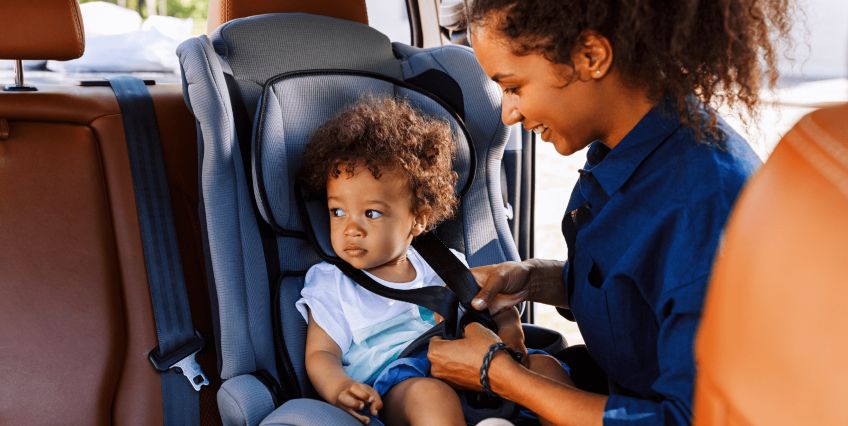Getting your child safely from point A to point B is every parent’s top priority. While car seats might seem complicated at first glance, they’re actually your best friend on the road. This guide breaks down everything parents need to know about child car seat safety in Canada into simple, easy-to-follow steps. Think of this as your friendly chat with a safety expert who wants to help you get it right, every single ride.
Staying Safe Online: What Parents Need to Know About Gambling

While keeping your child safe on the road is essential, it’s also important to take care of your own well-being, especially when it comes to online activities like gambling. As a parent, finding ways to relax is key, but it’s crucial to make responsible choices when engaging in online casinos. Whenever the thought of engaging in trying your luck with spins and numbers fascinates you, check out your go-to source for all the essentials about the best online roulette sites in Canada, because it can be a great start – but always prioritize safety. Discover tips for making smart decisions without compromising your peace of mind, including insights on Canada’s most multi-featured online roulette operators, choosing the finest roulette casino, and methods for locating the best sites for playing roulette online. Explore the roulette casino online game spectrum, uncover expert strategies for maximizing wins, and learn about secure payment methods to enhance your gaming experience.
To ensure you stay responsible while having fun, here’s a quick checklist of things to keep in mind:
- Choose Licensed Platforms: Only play on regulated sites.
- Set Spending Limits: Decide beforehand how much you’re willing to spend.
- Time Management: Allocate specific time slots for gaming sessions.
- Avoid Chasing Losses: Accept wins and losses as part of the game.
- Use Self-Exclusion Tools: Take breaks when needed to prevent burnout.
By following these guidelines, you can enjoy your favourite pastimes while maintaining balance in life. After all, taking care of yourself means being better equipped to care for those who depend on you. Now that we’ve covered some tips on staying safe online, let’s refocus on the important steps you can take to keep your children safe on the road. Understanding car seat safety and following best practices for each stage can make a huge difference in protecting your child in the event of an accident.
Why Child Car Seat Safety Matters
Using the right car seat isn’t just about following car seat laws – it can save your child’s life. When you use a car seat correctly, it can lower the chance of your child getting hurt or killed in a crash by up to 70%. That’s a big deal.
Car seats come in different types for different ages:
- Rear-facing seats: These are best for babies and little toddlers.
- Forward-facing seats: These are for bigger toddlers and preschoolers.
- Booster seats: These are for school-age kids until they’re big enough for the car’s seat belt.
Each type of seat is made to protect kids of different sizes and ages. It’s important to follow booster seat guidelines to know when your child is ready for this next step.
Child Car Seat Laws Across Canada

Car seat laws vary depending on the province or territory in Canada. Generally, children must use a car seat or booster seat that fits their weight and height until they are large enough to use a seat belt on its own. Here’s a general guideline:
- Babies: Require rear-facing seats for maximum support and safety.
- Toddlers: Should transition to forward-facing seats with harnesses.
- Older Kids: Need to use booster seats until they are big enough for a car seat belt to fit properly.
Car Seat Regulations by Province and Territory
| Province/Territory | Rear-Facing Seats | Forward-Facing Seats | Booster Seats |
|---|---|---|---|
| British Columbia | Until at least 1 year and 9 kg (20 lb) | Until reaching 18 kg (40 lb) | Until 145 cm (4’9″) or 9 years old |
| Alberta | Until at least 18 kg (40 lb) or age 6 | No specific law | No specific law |
| Saskatchewan | Until reaching 18 kg (40 lb) | No specific law | No specific law |
| Manitoba | Based on child’s age, weight, and height | Until at least 23 kg (50 lb) and age 5 | Until 145 cm (4’9″), 36 kg (80 lb), or age 9 |
| Ontario | Until reaching 9 kg (20 lb) | Until reaching 18 kg (40 lb) | Until 145 cm (4’9″), 36 kg (80 lb), or age 8 |
| Quebec | Based on age, weight, and height | Until reaching 145 cm (4’9″) or age 9 | |
| New Brunswick | Based on age, weight, and height | Until reaching 145 cm (4’9″) or 36 kg (80 lb) or age 9 | |
| Nova Scotia | Until at least 1 year and 10 kg (22 lb) | Until reaching 18 kg (40 lb) | Until 145 cm (4’9″) or age 9 |
| Prince Edward Island | Until at least 1 year and 10 kg (22 lb) | Until reaching 18 kg (40 lb) | Until 145 cm (4’9″), 10 years, or as per manufacturer’s limit |
| Newfoundland and Labrador | Until reaching 9 kg (20 lb) | Until reaching 18 kg (40 lb) | Until 145 cm (4’9″), 37 kg (81 lb), or age 9 |
| Yukon | Until reaching 10 kg (22 lb) and walking on their own | Until reaching 22 kg (48 lb) | Until 145 cm (4’9″) or 45 kg (100 lb) |
| Northwest Territories | Until reaching 9 kg (20 lb) | Until reaching 18 kg (40 lb) | No specific law |
| Nunavut | Until reaching 9 kg (20 lb) | Until reaching 18 kg (40 lb) | No specific law |
Safety Tips for Parents and Caregivers
Besides using the right seat, here are some other important safety tips:
- Keep kids under 13 in the back seat, away from airbags.
- Never leave kids alone in a car, even for a short time.
- Always use seat belts, even on short trips.
When it comes to using car seats safely, remember:
- Make sure the seat doesn’t move more than an inch when you push it
- The straps should be tight – you shouldn’t be able to pinch them at the shoulder
- The chest clip should be at the armpit level
- For rear-facing seats, the straps should be at or below the child’s shoulders
- For forward-facing seats, the straps should be at or above the shoulders
Understanding Booster Seats in Canada
Booster seats are an important step in your child’s car safety journey. Booster seat laws in Canada require children to use them until they’re big enough for the car’s seat belt. The booster seat age can vary, but generally, kids use them from about 4-8 years old.
Canadian booster seat regulations also consider weight, not just age. The booster seat weight requirement typically starts at around 40 pounds (18 kg). It’s important to know both the age and weight for booster seat use to ensure your child is safe and you’re following the law.
Helpful Resources for Child Car Seat Safety
If you’re not sure about car seat installation or need help with any aspect of car seat safety, don’t hesitate to ask for expert advice. Many organizations offer certified car seat technicians who can help make sure your seat is installed correctly. Local fire stations, police stations, and health units sometimes offer this service as well.
Educational Materials
Check out resources like guides, checklists, and videos from trusted organizations. These materials can help you understand how to choose, install, and use car seats properly. They often address common mistakes, like failing to tighten the harness enough or placing the chest clip incorrectly.
Though CarSafetyandKids.ca is no longer active, it once offered valuable tools for parents, including an “Ask an Expert” feature and downloadable step-by-step guides on car seat safety. While that site isn’t available, similar resources are still offered by organizations like Transport Canada, local health departments, and Parachute Canada. These groups provide up-to-date safety information, checklists, and expert advice to help parents keep their children secure on the road.
Your child’s safety rides on more than just wheels. Think of a car seat like a shield of protection – it only works when you choose the right one and use it the right way. Those few clicks of a buckle and those moments spent checking the fit aren’t just routine tasks – they’re your way of wrapping your child in an extra layer of care. So next time you hear that seat belt click or tug on those straps, remember: you’re not just following rules, you’re giving your little one the gift of safety on every journey.
